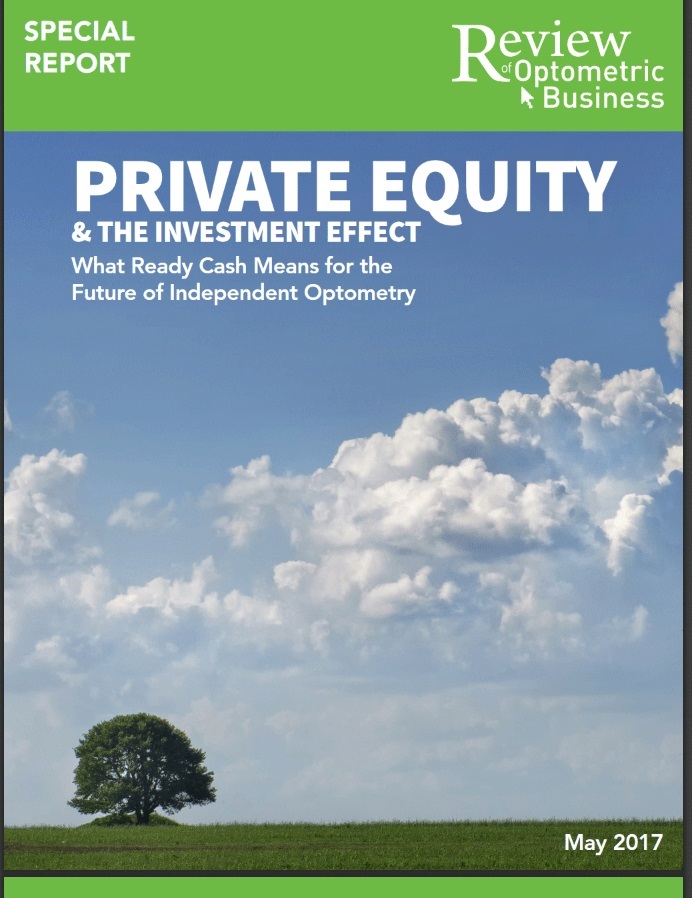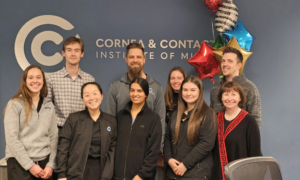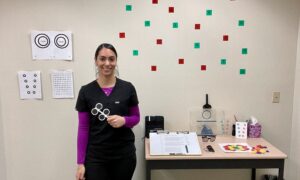By Jerome A. Legerton, OD, MS, MBA, FAAO

Oct. 25, 2017
The changing marketplace and growth of online and corporate retailers expands our patients’ choices for eyecare. Single-shingle practices comprise a fragmented marketplace to reach them and a perilous condition for us as practice owners.
We can improve the chances of patients choosing an independently owned practice by participating in regional alliances.
What is a “Region?”
A major metropolitan market is itself a region. There are 60, or more, cities in the U.S. that each constitute a region. Areas with less population density, and for which marketing media cover wider ranges, have regions that may include several counties or a score of towns. A region can be defined by population and practice density. Using one practice per 100,000 people, a 10-practice alliance is appropriate for one million of population. A ten-practice alliance represents a nice critical size. A 20-practice alliance is even better.
Private equity groups and practice alliances have the same business purpose and grand strategy. They are efforts to achieve a greater outcome as an aggregate than can be achieved by single-shingle practices acting independently. PE has the advantage of ownership of all locations. They have centralized control, and can mandate operating systems, define brand objectives and determine product and service offerings. Their work is to engender practitioner enthusiasm, manage team building and training, implement operating systems and provide data-driven placement tactics for driving earnings. Each has its own challenges. Incentives for performance become a critical element when the OD is no longer an owner.
OD alliances have the advantage of retained ownership and vision for future valuation to drive performance. The work of alliances will always be in achieving the requirements for success: leadership, cooperation, uniform operating systems, focus on brand building and differentiation.
I have a Masters of Science in counseling. My training there says that the greatest challenges in life are not in the work or obstacles to be moved, but with the people. Alliances require a tremendous effort on the part of every individual in the alliance. The ultimate success of the alliance will be measured by the willingness to cooperate.
What Your Regional Alliance Needs to Succeed
Coming together as a profession on a regional basis can help independents succeed in a fragmented market, but the alliances we’re a part of need the right organization and support:
Leadership: Most collective efforts require a leader, or co-leadership, with the skills of sharing the vision, creating consensus and identifying the right activities for focus and execution.
Cooperation: Optometrists were historically rugged individualists. That is less true today. Even so, it has been an historical reality that where two or three ODs gather together there will be 17 opinions. This is either a sign, or a cause, of fragmentation, and represents a challenge to cooperation.
Uniform Operating Systems: Several years ago I asked Glenn Ellisor, OD, co-founder of Vision Source, how he would characterize the best performing Vision Source practices. He said two things were common. The first was that the practitioners were excellent communicators. The second was their practice systems. Institutionalized or systematic best practices must be uniform in all the practices in the alliance.

Click HERE or the image above to read ROB special report “Private Equity & the Investment Effect. And read more about the opportunity of private equity from our contributors: “Private Equity vs. the CEO Model” by Neil Gailmard, OD, MBA, FAAO, and “Is Independent Optometry Still Desirable” by Brian Chou, OD, FAAO.
Focus on Brand Building: The core element of building a brand is patient satisfaction as measured by their experience. The valuable final product of a vision care provider is not 20/20 vision or treatment success. While these are our medical goals, the valuable final product is an enthusiastic, satisfied patient. Brands are built when patients are enthusiastically satisfied.
Differentiation: Refractive correction and eyewear dispensing have serious threats for long-term business sustainability. Even so, they will be an important part of practice, and require active attention for maintaining performance parity and profitability. There is a strong need to differentiate for brand building in a regional alliance. Inclusion of fee-for-service specialties like corneal refractive therapy, refractive error regulation (myopia control), vision therapy, low vision rehabilitation and ocular surface disorder management is an imperative for differentiation. Keep in mind that lifestyle services generate enthusiasm and support achievement of the valuable final product of a mission.
Survive “Inter-Dependently” or Not At All
Optometry achieved more than one could ever have imagined in the last 50 years because we cooperated nationally and regionally. We accomplished this for the most part while holding onto our single shingles, or practicing in group practices. Some of our colleagues succeeded in building high-performing multi-location practices in states where, unlike California, multiple locations were permitted by the state laws regulating optometry. Strong single-shingle practices are forecast to always exist.
I forecast that independent optometry will only hold market share if it is “inter-dependent.” Further, inter-dependent alliances, in the form of independent optometry, will only exist if they choose to not exit by selling the alliance as a single entity. Keep in mind, the higher the performance, the greater the exit value. There will be a demand for high-performance alliances in areas where it is not straight forward to build a new group, or form another alliance.
Coming together in regional alliances gives us a resource to survive–and thrive–into the future. We can use our combined strength to find new ways of serving patients and maintaining profitability. As Francis Bacon put it: “He that will not apply new remedies must expect new evils, for time is the greatest innovator.”
Do you participate in regional optometric alliances? What role do you think local alliances play in helping independent practices better serve patients and compete in a fragmented market?
 Jerome A. Legerton, OD, MS, MBA, FAAO, is co-founder and chief clinical and regulatory officer with Innovega Inc. He is the co-founder of SynergEyes Inc and co-inventor of Paragon CRT. Dr. Legerton was the managing partner of a seven-doctor, four office, multi-specialty practice in San Diego. He holds 52 issued U.S. patents, and has 70 pending applications registered in more than 45 countries. Products flowing from these patents enabled eyecare practitioners to earn more than $1 billion in fees for services and lenses in the last 15 years. Contact : jlegerton@aol.com.
Jerome A. Legerton, OD, MS, MBA, FAAO, is co-founder and chief clinical and regulatory officer with Innovega Inc. He is the co-founder of SynergEyes Inc and co-inventor of Paragon CRT. Dr. Legerton was the managing partner of a seven-doctor, four office, multi-specialty practice in San Diego. He holds 52 issued U.S. patents, and has 70 pending applications registered in more than 45 countries. Products flowing from these patents enabled eyecare practitioners to earn more than $1 billion in fees for services and lenses in the last 15 years. Contact : jlegerton@aol.com.




























